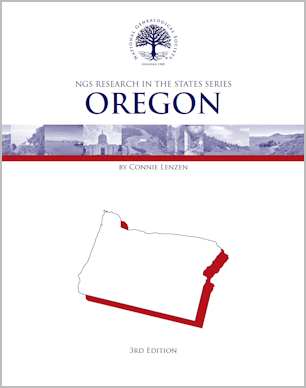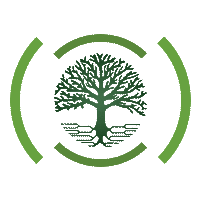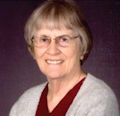 Prior to the nineteenth century, Oregon was home to Native American tribes, including Chinook, Calapooia, Cayuse, Coos, Klamath, Modoc, Molalla, Rogue, Umpqua, Wasco, and others. Fur-trapping companies extended their reach to Oregon in search of sought-after beaver pelts. European-Americans first began to settle in Oregon in 1830s. Thanks to records kept by Britain’s Hudson’s Bay Company, documents of the earliest trappers and later settlers were dutifully maintained and still exist. Research in Oregon, 3rd Edition, by Connie Miller Lenzen, CG, FNGS, introduces genealogists to a wealth of repositories and other archival resources.
Prior to the nineteenth century, Oregon was home to Native American tribes, including Chinook, Calapooia, Cayuse, Coos, Klamath, Modoc, Molalla, Rogue, Umpqua, Wasco, and others. Fur-trapping companies extended their reach to Oregon in search of sought-after beaver pelts. European-Americans first began to settle in Oregon in 1830s. Thanks to records kept by Britain’s Hudson’s Bay Company, documents of the earliest trappers and later settlers were dutifully maintained and still exist. Research in Oregon, 3rd Edition, by Connie Miller Lenzen, CG, FNGS, introduces genealogists to a wealth of repositories and other archival resources.
Oregon attracted settlers from around the world. In the 1840s, thousands of pioneers, most often Whites from Missouri and Illinois, were taking the two-thousand-mile long Oregon Trail to the Pacific Northwest. Lured by the promise of gold, Chinese began to arrive in the 1850s. They were followed by Japanese. By law, Blacks were excluded from the state until 1868 when the 14th Amendment of the US Constitution was ratified. Ethnic groups from Europe included Basques, Greeks, Irish, Swedes, and Volga Germans. Hispanic and Jewish Americans and later Iranians, Russians, Vietnamese also settled in Oregon.
The Research in Oregon guidebook offers an overview of the records found at repositories throughout the state along with their website addresses, physical addresses, and telephone numbers.
Repositories and other resources include
- Archives, libraries, museums, and societies
- Atlases, Gazetteers, and Map
- Business, Cemetery, Census, Court, Probate Records
- Ethnic and Tribal Records
- Land and Property Records
- Military, Religious, Tax, and Vital Records
- Records on Women and Voter Registration
Published by NGS, Research in Oregon is one volume in the Research in the States series edited by Barbara Vines Little, CG, FNGS, FUGA, FVGS. It is available for purchase in the NGS online store in both PDF and print versions.

 Connie Miller Lenzen, CG, FNGS, lives in Portland, Oregon. She has been a board-certified genealogist since 1983 and served as president of the Board for Certification of Genealogists. She is a life member of the National Genealogical Society (NGS), served as an NGS director, wrote NGS courses, and is a Fellow of the NGS. She is the recipient of an NGSQ Award of Excellence and is an International Society of Family History Writers and Editors award winner.
Connie Miller Lenzen, CG, FNGS, lives in Portland, Oregon. She has been a board-certified genealogist since 1983 and served as president of the Board for Certification of Genealogists. She is a life member of the National Genealogical Society (NGS), served as an NGS director, wrote NGS courses, and is a Fellow of the NGS. She is the recipient of an NGSQ Award of Excellence and is an International Society of Family History Writers and Editors award winner.